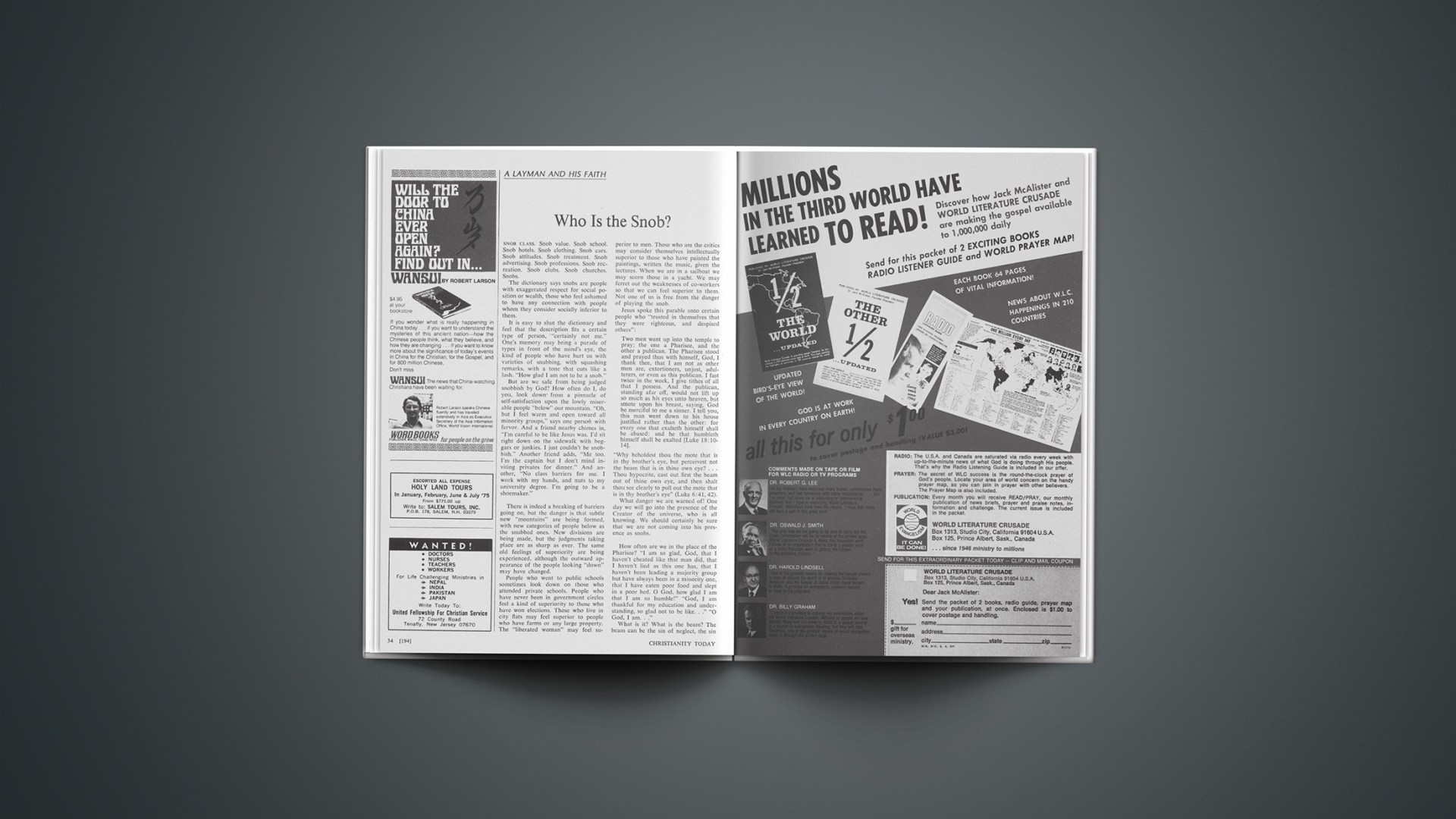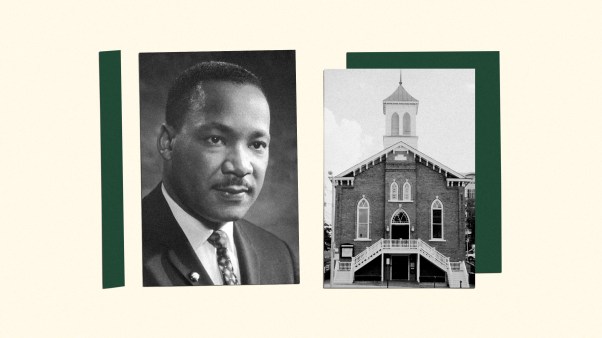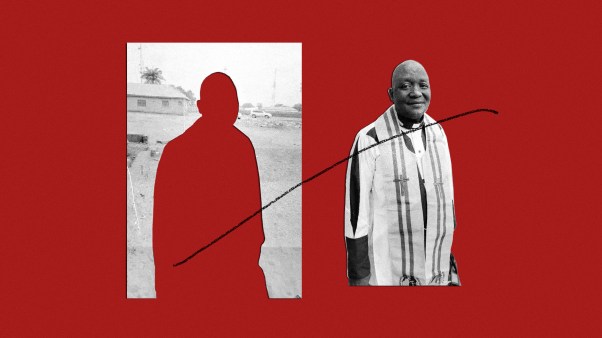“The lord said to Abram: Now raise your eyes and look from where you stand northward, southward, eastward and westward, for all the land you are viewing I will give you and your offspring forever” (Gen. 13:14, 15). When God spoke those words Abraham was standing at Bethel, which is nearly 2,900 feet above sea level. From that elevation he must have had a magnificent view of the land that would play such an important role in history.
Most of us know little about the physical features of Palestine. Yet an understanding of Bible geography contributes to an understanding of the teachings of Scripture.
For example, in Matthew 20:18 Jesus said to the Twelve, “We are going up to Jerusalem.” Why up? Because Jerusalem is located in a mountain range at an elevation of about 2,600 feet. Just down the mountain from Jerusalem is the Dead Sea, the lowest spot on earth, 1,300 feet below sea level.
As a child I always pictured the “wilderness” in which the children of Israel wandered in terms of the forests around me in the Pacific Northwest—lush green trees and underbrush, almost jungle-like in spots. I don’t recall ever seeing a picture of the Sinai wilderness as it really is—a bleak, barren, but beautiful desert. Once I discovered this, the wilderness wanderings took on new meaning. God’s provision of food for forty years in a barren wasteland is much more of a miracle than it would have been had they been traveling in a forest. And how vital it was that the Israelites’ shoes not wear out, since they had to walk on scorching sand.
“ ‘Come on! Let us mold bricks and thoroughly bake them,’ ” said the people about to build the Tower of Babel; “so they had brick for stone and asphalt for mortar” (Gen. 11:3). Why brick instead of wood or stone? The answer is obvious when you study the geography of Mesopotamia (modern-day Iraq). Lumber and stones were scarce. Clay for making bricks was abundant.
What part did geography play in the development of such a high civilization in ancient Egypt? We’re all familiar with the beautiful furnishings found in the tombs of the Pharaohs, the majestic pyramids, the hand-carved sphinx. Look for a moment at a map of Egypt. There’s the Sinai Desert on the east, the Mediterranean Sea on the north, the Sahara Desert on the west. Would not these natural barriers hold back invaders so that a potential military force could work as artisans instead?
To study Bible geography adequately and teach it to your congregation requires tools. The starting point is a good Bible atlas, such as Baker’s Bible Atlas, The Zondervan Pictorial Bible Atlas, or The Wycliffe Historical Geography of Bible Lands. For more detailed study The Macmillan Bible Atlas is a valuable source.
Listed below are a number of maps well suited for teaching Bible geography to small study groups or for use during a sermon. Many are available from your church supplier. Others you may want to order on your own. A list of publishers’ addresses is provided at the end of this article. (I do not necessarily recommend the entire contents of all publications listed.)
OVERHEAD TRANSPARENCIES
The overhead projector is one of the most valuable tools available for teaching Bible geography. And a number of excellent overhead transparencies are available.
The David C. Cook Publishing Company offers two kits of overhead transparencies. “The Holy Land” includes one basic Holy Land map with seven overlays showing Bible history from the twelve tribes to the 1967 boundaries. Also included are two map duplicating masters to use with your students and helpful background material for the teacher. “The Spread of Christianity” contains eight color transparencies and two duplicating masters tracing the area of Christ’s ministry, Paul’s journeys, the spread of Christianity and advent of modern missions, and major religions in the world today. $7.95 per set.
Two outstanding boxed sets of transparencies are available from Broadman Press. “Bible Map Transparencies” includes twenty-eight color transparencies with overlays showing such things as geographical areas, historical eras, and routes of travel. “Bible Lands, Past and Present” contains twenty-five transparencies and overlays. This set is especially good for teaching biblical archaeology. You’ll find five maps plus chronological charts, pictures of archaeological finds, keys to ancient languages, and other helpful materials. Each set has a printed guide with helpful information about each transparency. $40 per set.
For modern-day maps of the Middle East, four of the Hammond Map Transparency Series will be of help: “Iran and Iraq,” “Near and Middle East,” “Israel and Jordan,” and “Turkey, Syria, Lebanon, Cyprus.” Each color transparency comes with four overlays. The top overlay is clear so you can write on it. $7.50 each.
The Bible Believers’ Evangelistic Association offers one four-color transparency map of modern Israel, showing Abraham’s journey, the Exodus, and other things. The overlay illustrates one idea of the territory the Jews will possess during the 1,000-year reign of Christ. $6.95.
An excellent History of Man Series of transparencies is available from Milliken Publishing Company. Ten sets of transparencies in the series particularly relate to Bible history from “Sumer and Babylonia” through “The Byzantine and Moslem Empires.” Each set contains twelve full-color transparencies (maps, pictures, charts, and so on) and four or more duplicating masters for use with students. There is also a teacher’s guide with helpful background information for each transparency. The set on “Sumer and Babylonia” is especially good for teaching about life in Abraham’s day. Write for a catalog or order on thirty-day approval. I highly recommend the ten books in this series. $6.95 per set.
RELIEF MAP
For full understanding of the terrain of the Holy Land a relief map is a must. Kistler Graphics has an 11″×14″ full-color vinyl relief map entitled “New Testament Palestine” for $4.95.
WALL MAPS
Among the more attractive wall maps are the following:
“Abingdon Pictorial Bible Maps—Set D” (Abingdon Press). Contains six four-color 17″×24″ maps with graphic illustrations, charts, drawings, and notes. Covers early eras in Hebrew history through the spread of Christianity. $2 per set.
“Standard Bible Maps and Charts” (Standard Publishing). Six four-color maps and two charts, 19″×24″. The illustrations are particularly suitable for younger children. $2.50 per set.
“Broadman Class Maps” (Broadman Press). Six four-color maps, 25″×25″, available singly ($1.75 each) or in a set ($9.25). Mounted on wooden half-rounds at the top. Cover “The Biblical World, 2000–1500 B.C.” through the “Missionary Journeys of Paul.” The two maps just mentioned are also available in “Giant” size, 50″×37″, mounted on wooden half-rounds for $5.95 each.
SLIDES/FILM/FILMSTRIP
Showing slides of the Holy Land? Don’t forget to include some map slides to locate specific towns and areas. Matson Photo Service offers several 35mm map slides. Write for a catalog.
A fourteen-minute color film entitled “A Pictorial Geography” is available from Family Films; it shows the geographical importance of Palestine in Bible history. Part of “The Land of the Bible Series,” it rents for $9. Also available from Family Films is a fifty-one-frame, twelve-minute color filmstrip entitled “Geography of the Holy Land.” It surveys the four natural divisions of Palestine, recalling some biblical events associated with them, and sells for $11 with a 12” record.—MARILYN MCGINNIS, freelance writer, formerly on the editorial staff of Gospel Light’s Teach magazine, Los Angeles, California.










